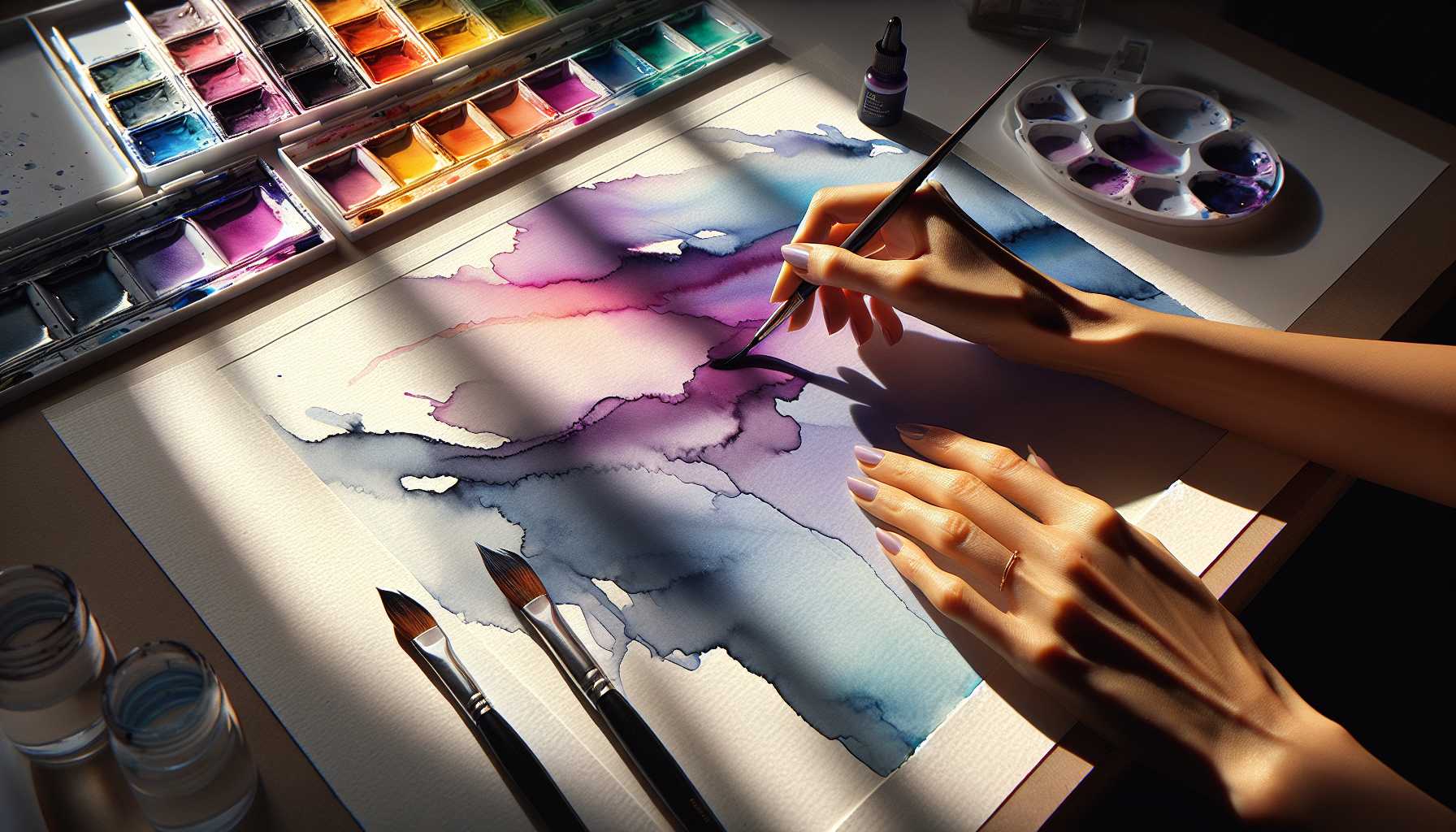Ever marveled at the enchanting color transitions in watercolor artworks? Let me let you in on the secret – it’s all about color charging, and it’s simpler than it seems!
Unraveling the Concept of Color Charging
Think of color charging like introducing two friends to each other. It’s all about letting varied hues interact and blend while they’re still wet. The outcome can be truly striking!
Laying the Groundwork with Wet-in-Wet Foundation
Before venturing into color charging, it’s crucial to understand the basics. Begin with high-quality paper and ensure it’s adequately wet. You could equate this to preparing a warm, inviting space where your colors can comfortably mingle.
A Step -by- Step Guide to Basic Color Charging
- Apply your first color onto the damp paper.
- Clean your brush meticulously.
- Fill it with a second distinct color.
- Gently brush the edge of the previously applied color.
- Now sit back and observe the color magic unfold!
Handy Tips for Effective Color Charging
Keep these friendly tips up your sleeve:
– Avoid overblending.
– Use colors that have similar moisture content.
– Nail the knack of timing (avoid being too wet or too dry)
– Start with analogous shades.
Pitfalls to Sidestep in Color Charging
We’re all bound to make mistakes and here are the most common ones to look out for:
– Using excessive amounts of water.
– Too vigorous mixing of colors.
– Delaying too long between applying colors.
– Using colors that have too much contrast in value.
Advanced Approaches to Color Charging
Ready to push the envelope? Experiment with these riveting techniques:
– Multi-color charging.
– Directional charging.
– Charging with clean water.
– Creating gradients.
Identifying Ideal Opportunities for Color Charging
Color charging truly comes into its own when painting:
– Skies at twilight.
– Floral petals.
– Autumn leaves.
– Waves of the sea.
– Mountainous terrains.
Importance of Selecting the Right Tools
There’s no requirement for state-of-the-art equipment, but having these basics will get you off to a good start:
– High-quality brushes that have excellent water retention.
– Premium watercolor paper.
